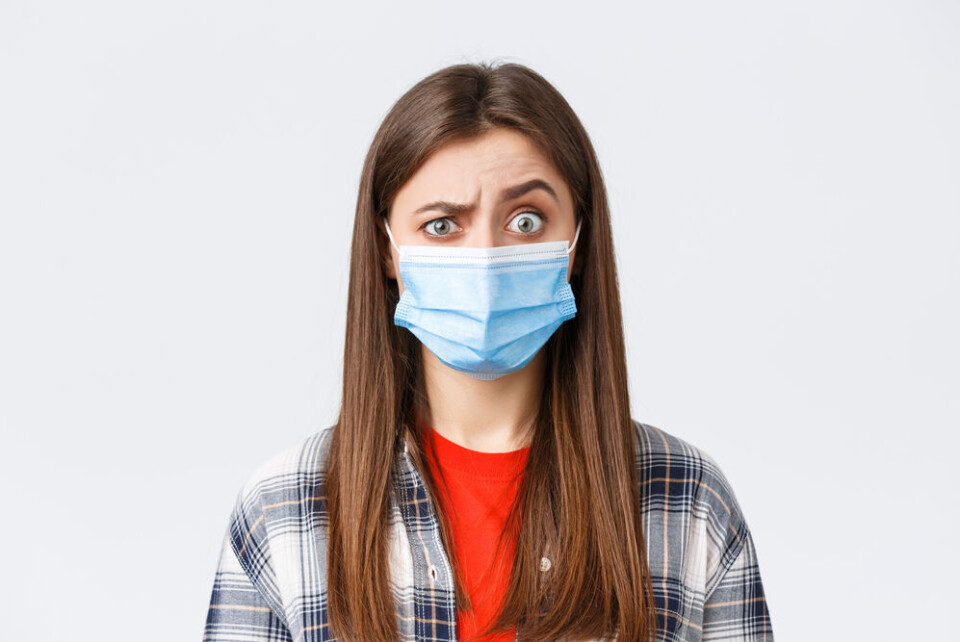-
Top Paris restaurants to sell off 20,000 tableware items
Pieces set to go on sale include glassware, cutlery, and silverware, as well as bistro tables and chairs. Money raised will go in part to charity
-
2025 world economy rankings: France classed above the UK and US
France’s low inflation rate helped it beat many other nations
-
Speed, alcohol, drugs: French ski resorts take action
Behaviour of some skiers a cause for concern as severity of injuries worsens
Pass sanitaire, taux d’incidence: France’s Covid jargon explained
TousAntiCovid Signal, certificat de rétablissement, gestes barrières...We explain some of these Covid-related terms and why France’s health pass does not actually exist

The Covid-19 pandemic has led to the creation or popularisation of many different words and terms which can sometimes get confusing.
We explain five of the ones that are most commonly misunderstood.
The health pass (pass sanitaire)
Why does the health pass not exist?
Well, the term does exist and is used widely, but the health pass itself is not actually a separate or physical document. It is better to think of the health pass as a catch-all term that just describes a way of proving your Covid-19 status.
You can prove this in France by presenting one of the following certificates:
- A Covid-19 test (rapid antigen or PCR) showing a negative result and taken within the past 48 hours
- A Covid-19 vaccination certificate showing full vaccination
- A Covid-19 test (rapid antigen or PCR) showing a positive Covid-19 result, taken between 11 days and six months prior
These documents can be shown in paper format, digitally, or through the phone application TousAntiCovid.
You can read a fuller explanation of what the health pass is and how to get one or all of these certificates in our article here - France's Covid ‘pass sanitaire' is not a document, so how do I get it?
The European Union has also chosen to use a misnomer to describe its “health pass”.
The EU Digital Covid Certificate is not a certificate at all, and it is not even strictly digital (it can be presented on paper).
It is a system whereby travel or event authorities within the EU can verify Covid vaccination or test certificates issued in any of the other member states.
This means that if you get a Covid-19 test or vaccination certificate in France, it is simultaneously a pass sanitaire and an EU Digital Covid Certificate. Or you can just think of it as a Covid-19 test or vaccination certificate that proves your Covid status in France and around the EU.
Read more:France’s health pass vs the EU’s health pass: What is the difference?
TousAntiCovid Signal
TousAntiCovid Signal is the simple and digital alternative to a paper logbook, the French government states.
Since June 9, it has been necessary when entering indoor areas of restaurants, bars, cafes, gyms, etc, to either write your name and contact details in a logbook, or scan a QR code using the application TousAntiCovid.
This is part of France’s Covid track and trace measures.
In the TousAntiCovid application there is a section called “Cahier de rappel”. This is TousAntiCovid Signal, basically just the name for a QR code scanner.
Certificat de rétablissement
A recovery certificate. It sounds like a certificate you would get after having recovered from Covid-19, but it is not. It actually just refers to a positive Covid-19 test.
If you have tested positive for Covid-19 between 11 days and six months ago, the positive test serves as evidence that you are immune to Covid-19 and can be used as a “health pass” (see above to understand what a health pass is).
You can upgrade your positive Covid-19 test to get one with the latest QR code on it that can be used for travelling around the EU.
If you have a French social security number and have tested positive within the past three months, you can get an updated test certificate through the government website sidep.gouv.fr.
If you tested positive more than three months ago and/or do not have a French social security number, France’s national health insurance website Ameli suggests that you ask the health professional who carried out your test for an updated certificate.
The taux d’incidence(incidence rate)
This is one of the key indicators the French government uses to track the spread of Covid-19, nationally, regionally and departmentally.
It refers to the number of positive Covid-19 cases reported per 100,000 people. In France, an average is taken over a period of the previous seven days. The current national taux d’incidence (incidence rate) in France is 40.
The government has stated that anything over 50 is above the alert threshold.
The European Centre for Disease Prevention and Control also uses the incidence rate to track the spread of Covid-19 around Europe. However, it uses averages taken over a two-week period, making it harder to compare France’s national statistics to other European countries’.
Gestes barrières
This is no doubt a term you have heard often if you have been in France since the beginning of the pandemic in spring 2020.
It translates literally as ‘barrier gestures' and covers everything from keeping a two-metre distance from people, washing hands regularly, wearing a mask, aerating rooms and coughing or sneezing into your elbow or a tissue.
There is no common English equivalent for this useful term.
Related stories:
12 questions on how to use the French health pass from July 21
How to book your Covid-19 vaccination appointment in France
Health pass extended, more vaccination: Macron’s anti-Covid measures
























